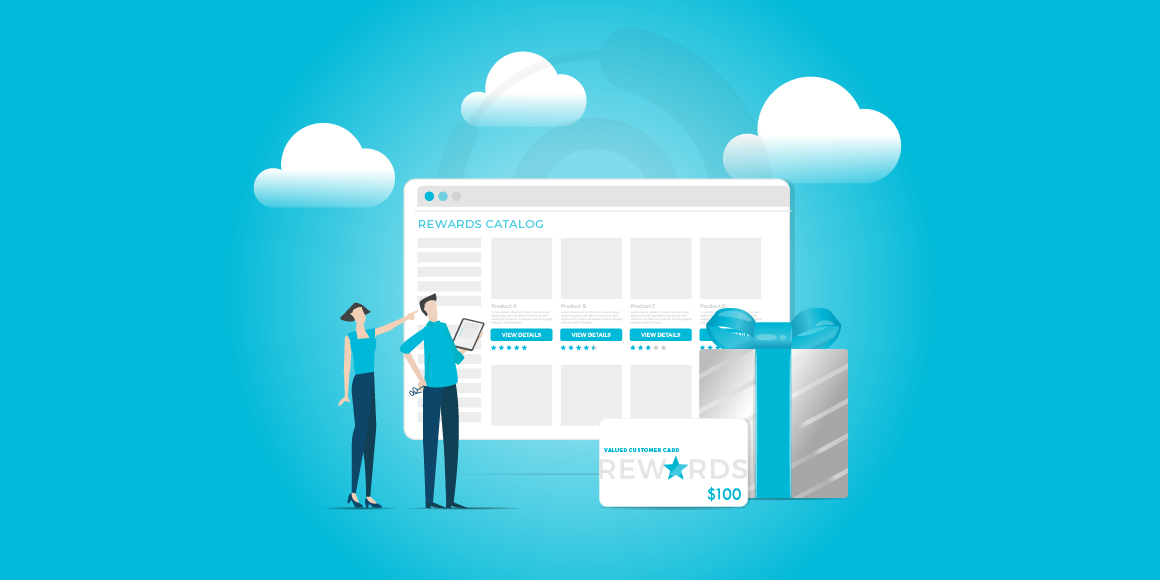Inspiring, engaging, and enabling your channel partners is essential for delivering maximum value and converting leads efficiently. Achieving this requires channel leaders to pinpoint pain points, eliminate friction, and streamline the entire experience across all processes and participants.
Discover the key factors causing friction in channel partnerships and learn effective strategies to eliminate these obstacles throughout the sales process.
What Causes Friction During the Partner Sales Process?
Before addressing these challenges, it's crucial to understand what causes friction during the partner sales process.
Misalignment between stakeholders and the customer journey
Digitally connected buyers approach things differently, have different requirements, and demand more sophistication from partners. What once worked well simply doesn’t cut it today, which adds a whole new level of complexity for channel partners. However, despite the profound impact of digital transformation on channel sales, only 12 percent of partner organizations have modified their sales process to align with the digital buyer.
And therein lies the friction. Friction most often occurs when channel partners fail to recognize or understand the different stages of the new, digital buyer’s journey. When the modern buyer’s journey and partners’ sales process are completely misaligned, channel sales and revenue are the first to suffer.
Some channel partners—especially those who are not marketers by trade—lack understanding of the buyer’s journey and which stage prospects are in. Many partner sales teams struggle to recognize demand type as well as various inflection points (think milestones) between the different stages of the buyer’s journey.
In fact, 72 percent of channel partners said the biggest obstacle they face is an inability to connect offerings to buyer needs and challenges. This misalignment can significantly impede channel success, leading to missed sales, stalled revenue growth, and damaged channel partner relationships.
Weak partner onboarding and education
A well-structured partner onboarding and education process is paramount to smooth channel sales operations. However, many organizations fail to offer robust training or fail to infuse their program with up-to-date insights about market trends and buyer needs. This leads to a knowledge gap, leaving partners ill-equipped to engage with modern, digitally connected buyers. When partners are not properly educated about the buyer's journey, demand types, and inflection points, they are unable to connect the product offerings to the buyer's unique needs and challenges, resulting in missed sales opportunities and friction in the sales process.
Unmotivated partners
There's nothing more damaging to the channel success than unmotivated partners. Partners who lack motivation or engagement can hinder the progress and success of the whole channel ecosystem. Maintaining partner motivation is a continuous effort that requires effective incentives, clear communication, transparency, and understanding of partners' needs and requirements. Without these elements, partners can become demotivated and inconsistent in their sales efforts, causing friction and potentially jeopardizing relationships.
Siloed teams
Siloed teams result in disjointed efforts and lack of synchronization, creating a significant pain point in channel sales. When teams work in silos, important information is often kept within certain groups, preventing efficient communication and collaboration. This lack of transparency and alignment between teams can create friction, misunderstandings, and inefficiencies in the sales process, hindering the overall performance of the channel partnership.
4 Ways to Eliminate Channel Partnership Friction
What steps can you take to eliminate channel partnership friction across the entire sales process? Here are a few ways to reduce friction and enhance sales team enablement:
Ensure alignment among key players.
Creating frictionless partnerships requires complete alignment among all key players. That means ensuring everyone is on the same page, from the vendor and sales prospect to the channel partner’s sales, marketing, and customer success teams. Research shows that alignment between sales and marketing teams alone can make companies 67 percent more effective at closing sales and decrease friction by as much as 108 percent.
You can ensure alignment between the buyer's journey and partner sales process by aligning business objectives so all stakeholders are working toward achieving the same goals. If you’re unsure of what your friction points even are, data is your friend. Data can help to identify friction points and significantly improve alignment initiatives by helping you craft a strategy that addresses your specific pain points.
Sound complex? 360insights supports this process by mapping out each channel partner types’ sales process and overlaying it with the buyer’s journey. From there, we harness real-time data points and predictive insights to help our customers improve business decision-making, performance, engagement, and, ultimately, partner team enablement.
Help educate channel partners.
Partner education plays a critical role when it comes to eliminating potential pain points. Take steps to educate your partners’ sales and marketing teams on the different stages of the buyer’s journey and how it applies to their prospects. Make sure they understand each of the different stages, demand types, and inflection points to ensure success.
You can eliminate friction across the entire sales process by educating your channel partners to help them better understand what buyers want and need. This way, they can connect offerings to each buyer’s unique goals and challenges rather than taking a one-size-fits-all approach or trying to fit a square peg in a round hole. For example, you want to ensure channel partners don’t try to sell T-shirts to someone who really needs shoes or to someone who needs shoes but doesn’t realize it just yet.
You can also help support your channel partners’ marketing teams to reduce unnecessary friction. Start by identifying who’s responsible for marketing activities and making sure they know how to use marketing automation tools to build campaigns, convert more leads, and boost channel sales performance.
Drive partner engagement through incentives.
The great thing about incentives is that if used correctly they truly drive the right partner behaviors. Using incentives can help to ease up points of friction by inspiring channel partner sales and marketing teams to execute desired behaviors which include plenty of earning and redemption options at the individual and partner company levels
Incentives play a significant role in driving behavior modification using both intrinsic and extrinsic drivers and by aligning your channel partners’ sales and marketing efforts to your own buyer’s journey—not to mention ever-evolving market conditions. With that said, it’s important to align your channel incentives at the right stages throughout the partner lifecycle.
For example, you can offer incentives up front to encourage channel partners to complete desired training, certifications, or demand creation. You can also incent the lead management process around meetings, deal registration, and/or proofs of concepts. Or, you can incentivize the post sales process after a transaction is complete with rebates or rewards points for additional subscriptions and/or renewals. Additionally, you can fine-tune your efforts by applying benchmark incentive rates by sales cycle stage, so partners can begin stacking rewards and accelerating time to revenue.
Orchestrate channel ecosystems.
Last but certainly not least is ecosystem orchestration, or how all moving parts and players should collaborate to deliver value across the buyer’s journey and sales process.
The significance of ecosystem orchestration cannot be overstated. This approach is not merely about creating alignment among various stakeholders; it emphasizes the importance of building a connected community where each participant plays a pivotal role. Imagine a well-conducted orchestra, where each musician, regardless of their instrument, contributes to a greater musical composition. Similarly, in an effective business ecosystem, every partner, supplier, customer, and community member has unique insights and strengths that, when harmonized, can lead to innovative solutions and enhanced performance.
To truly embrace ecosystem orchestration, businesses must first take the time to map out their network, recognizing both direct relationships and indirect influences.
Sales Professionals
The team responsible for driving revenue and managing relationships, including sales representatives and account managers.
Marketing Professionals
The individuals tasked with developing and implementing strategies to spotlight the ecosystem's offerings and draw in customers.
Product Managers
Those in charge of supervising the development, enhancement, and lifecycle management of the ecosystem's solutions or products.
Technology Specialists
Experts who provide indispensable technical support, enabling smooth implementation and usage of the ecosystem’s products or solutions.
Operations and Supply Chain Professionals:
Responsible for managing logistics and supply chain processes, ensuring optimal efficiency.
Customer Success Managers:
Professionals focused on fostering and maintaining long-term customer relationships, with an emphasis on customer satisfaction and retention.
Executives and Leadership
Those setting the strategic vision, ensuring its alignment with business goals, and driving the ecosystem's success.
Influencers
Individuals outside the transactional sphere who significantly influence the ecosystem's success, like analysts, investors, or social influencers.
Remember how we talked about alignment between key players? Well, this includes your ecosystem stakeholders. And legacy partner management tools like PRMs don't provide the support needed to make this happen.
Enter the modern ecosystem orchestration tech stack: the 360insights Ecosystem.
Unlike the outdated legacy PRM tools which suffer from a lack of functional depth, complexity, and rigidity, this modern tech stack provides flexibility and functional prowess to manage and streamline various operations and tasks across your business ecosystem.

It includes key components like collaboration and communication tools, training and onboarding support, marketing automation, account mapping, lead generation and management, deal registration and opportunity management, and incentive and rewards management to name a few. Such an advanced tech stack also includes MDF and/or Co-Op fund management, marketplace management, business planning, performance tracking and measurement, data analytics and reporting, and integration capabilities.

Concluding Thoughts
In conclusion, the secret to maximizing value in your channel partnerships lies in alleviating friction. Friction can arise from a multitude of sources, including misalignment between stakeholders, poor partner education and onboarding, unmotivated partners, and siloed teams. However, the good news is that you can take steps to eliminate this friction across the entire sales process. Ensuring alignment among key players, educating channel partners, driving partner engagement through incentives, and orchestrating channel ecosystems are all ways to reduce friction and enhance the success of your channel partners. By implementing these steps, you'll be better equipped to support your channel partners, ultimately leading to improved sales performance and stronger relationships. Remember, fostering a seamless end-to-end experience for all players in your channel ecosystem is essential to delivering the utmost value. Finally, leverage modern tech stacks like the 360insights Ecosystem to effectively manage and streamline operations across






